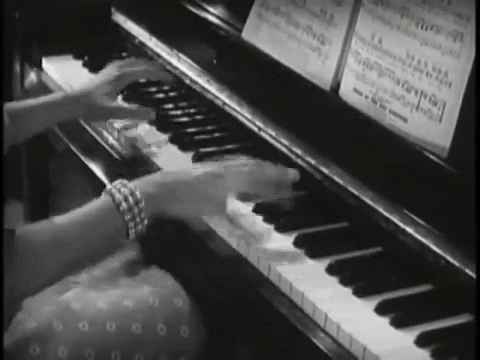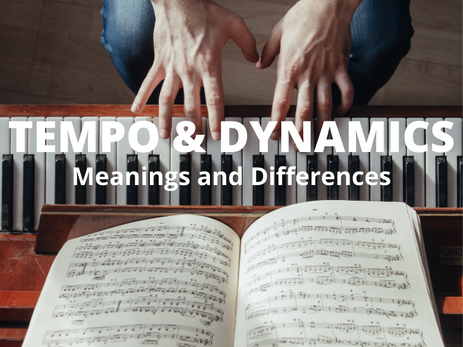Uncategorized
Tempo Terms: Differences and Meanings
Tempo Terms: Differences and Meanings
As we are learning new pieces and repertoire, we come across all kinds of different musical terms. These give us the basic instructions of how we need to play the music in terms of speed (tempo) and volume (dynamics).
Here they are categorized in what some people call the “Italian tempo terms”, as they are written in Italian, plus what they mean and how they differ.
THE SLOWEST TERMS WE COME ACROSS (in order):
Lento and Largo meaning
“Slowly” (largo music definition)
These are very comparably similar and can range between metronome speed of 40-60bpm.
Larghetto
We can assume to be faster than Largo just over 60bpm.
Adagio and Adagietto
“Calmly”
Ranging between 60-80bpm Adagietto being slightly faster.
THE MODERATE TEMPI:
Andante and Andantino
“Moderately slow”
This loosely translates to ‘walking speed” at a reasonably easy pace that isn’t too slow.
Ranging from the high 70s to a little over 100. Andantino can be taken to mean a little faster (or even slower) than Andante.
Moderato
“Little slower than allegro”
This is our general moderate speed. This gives us between 100-120bpm.
THE FASTER TEMPI:
Allegretto or Allegro moderato
“Moderately fast”
This is just nearing fast at between 110-120.
Allegro
“Cheerful, bright”
This is our standard for fast pieces. The tempo will usually range between about 120-150.
Sometimes we may come across Allegrissimo which we assume faster than Allegro.
Vivace and Vivacissimo
“Lively, fast”
These mean ‘lively’. Often we may see ‘Allegro Vivace‘. These can reach from 150 to the 170s.
Presto and Prestissimo
“Extremely fast”
These mean ‘very quick’. Easily reaching speeds from 160bpm and beyond!

Tempo Terms: Differences and Meanings
TEMPO CHANGES:
For changing tempo, this is very much left to the discretion and interpretation of the performer:
Often times we may also see instructions for slowing down or speeding up:
Slowing Down
Rallentando, Ritardando
Both slower in a similar way (often Rall. Rit.)
Ritenuto; Riten
Becoming ‘held’ or ‘held back’. This is usually a more immediate- or exaggerated- way of slowing down. We can literally stretch out each individual note to gain this effect.
Lentando (slowing) or Allargando (broadening)
These are possible alternatives
Calando
Slowing (often getting quieter also)
Meno Mosso/Moto:
Less movement/ motion
Getting Faster (Speeding-up)
Accelerando; Accel.
This is the standard for speeding up.
Stringendo
This is an alternative. Literally meaning ‘tightening.’
Stretto
This we assume to mean faster but usually relates to a fugue where entries of phrases start much sooner. Creating a restless, breathless phrasing effect. Chopin uses this in his fourth prelude in E minor.
Precipitando (falling) or Affretando (hurrying)
These are speeding up with a sense of urgency
Píù Mosso/Moto
More movement/motion
Doppio Movimento/ Doppio Più Mosso
This literally means ‘double movement’ (twice the speed)
DYNAMICS:
See the continuation to this article as an attachment to our previous article on dynamics. CLICK HERE
Author: Anthony Elward
Learn music with us. Book your trial lesson to learn about tempo, dynamics and more!
#allegrovivacemeaning #piumossomeaning #tempomeaning #allegrettotempo #largotempo #adagiomeaning #andantemeaning

